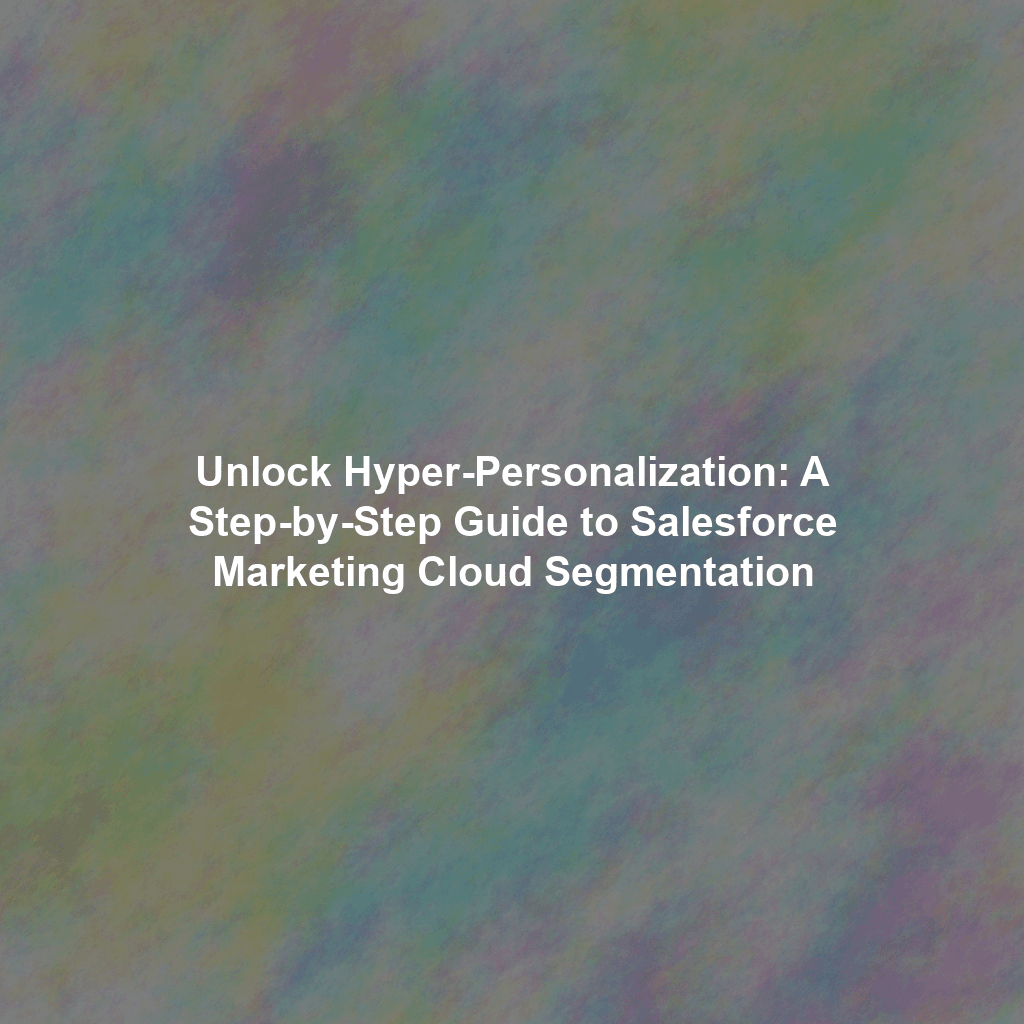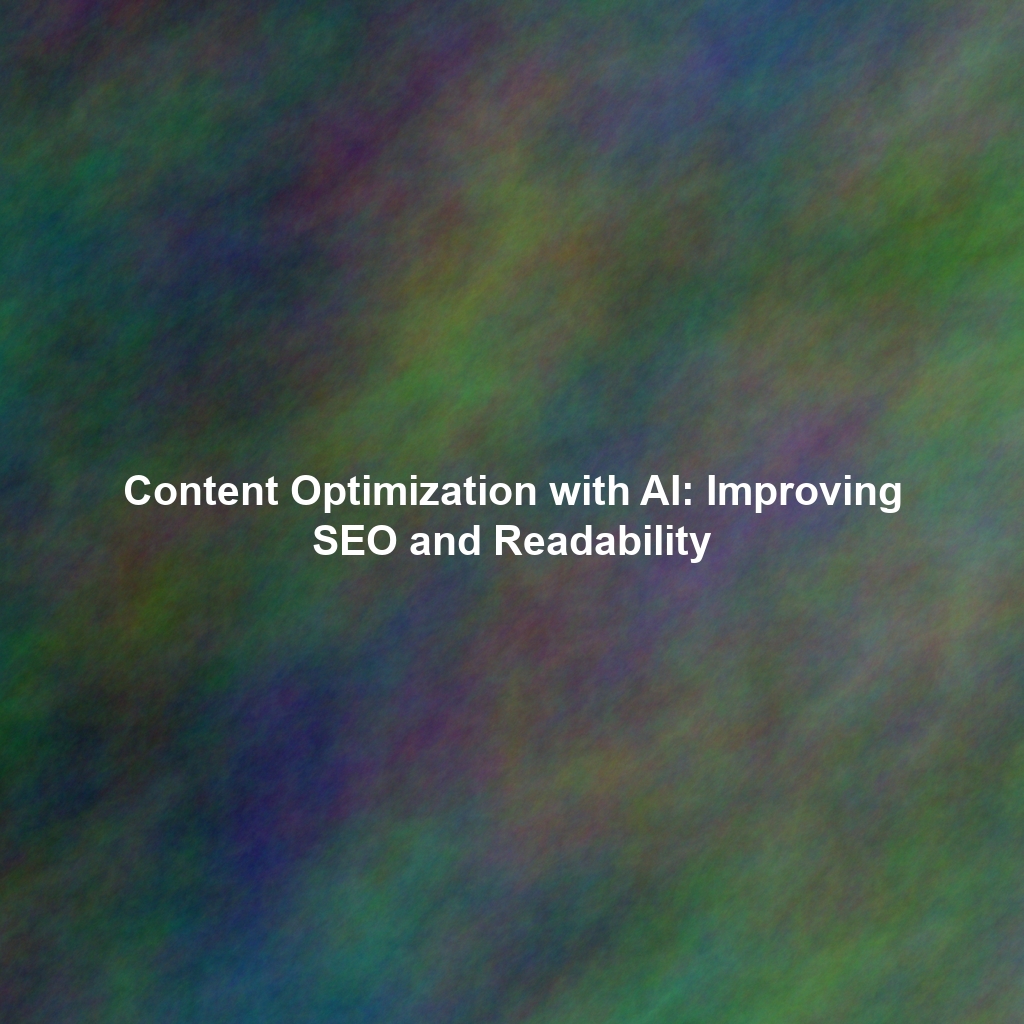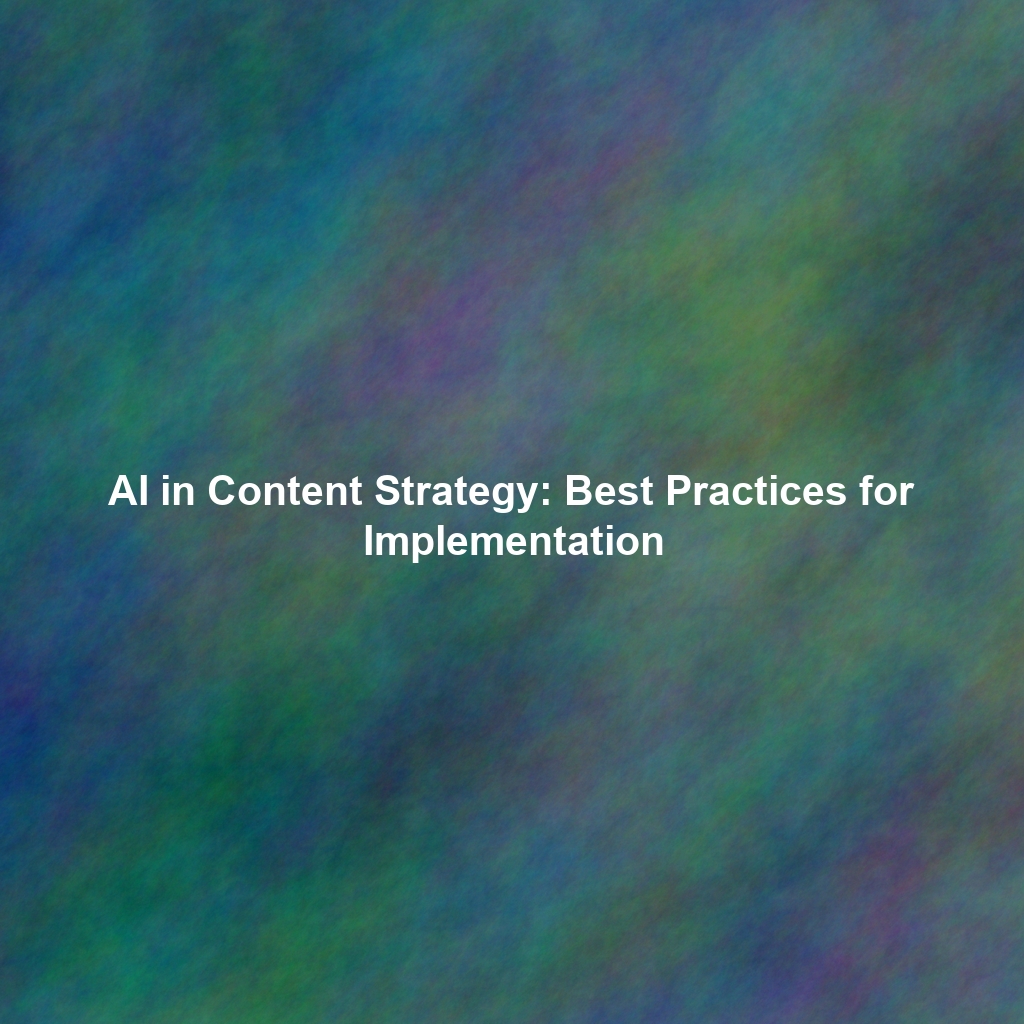Why Hyper-Personalization Matters in Salesforce Marketing Cloud
Hyper-personalization is more than just adding a customer’s name to an email. It’s about delivering the right message, to the right person, at the right time, on the right channel. This level of personalization leads to:
- Increased Engagement: Personalized content resonates more with customers, leading to higher open rates, click-through rates, and conversions.
- Improved Customer Loyalty: Customers feel valued and understood when they receive personalized offers and communications, strengthening their loyalty to your brand.
- Higher ROI: By targeting your marketing efforts more effectively, you can maximize your return on investment and reduce wasted ad spend.
- Enhanced Customer Experience: Personalized experiences create a more positive and memorable interaction with your brand.
Step 1: Moving Beyond Basic Demographic Segmentation
While demographic data (age, gender, location) is a good starting point, it only scratches the surface of personalization. To achieve hyper-personalization, you need to incorporate more granular data points.
Leveraging Behavioral Data
Behavioral data provides valuable insights into how customers interact with your brand. This includes:
- Website Activity: Pages visited, products viewed, content downloaded.
- Email Engagement: Emails opened, links clicked, forwards.
- App Usage: Features used, time spent in the app.
- Social Media Interactions: Likes, shares, comments.
Example: Segment users who have viewed a specific product category on your website but haven’t added it to their cart. Send them a targeted email with a special discount on those products.
Utilizing Purchase History
Purchase history reveals a customer’s past buying behavior and preferences. This includes:
- Products Purchased: Specific items bought, categories purchased.
- Purchase Frequency: How often a customer makes a purchase.
- Average Order Value: The average amount a customer spends per order.
- Payment Methods: Preferred payment methods.
Example: Segment customers who have purchased a specific product in the past and send them an email promoting related products or accessories.
Step 2: Implementing Advanced Segmentation in Salesforce Marketing Cloud
Salesforce Marketing Cloud provides several tools for creating advanced segments:
Data Extensions
Data Extensions are tables in SFMC that store subscriber data. You can import data from various sources, including your CRM, website, and other marketing platforms. Ensure your data extensions are properly structured and contain all the necessary data points for your segmentation efforts.
Automation Studio
Automation Studio allows you to automate the process of segmenting your audience. You can create automated queries that run on a schedule to update your segments based on the latest data. Here’s a basic example of creating a segment of users who haven’t opened an email in the last 30 days using SQL Query activity in Automation Studio:
SELECT
s.SubscriberKey,
s.EmailAddress
FROM
_Subscribers s
WHERE
NOT EXISTS (
SELECT 1
FROM _Open o
WHERE o.SubscriberKey = s.SubscriberKey
AND o.EventDate >= DATEADD(day, -30, GETDATE())
)
AND s.Status = 'Active'
Configure the target data extension where the results of the query will be stored.
Audience Builder
Audience Builder provides a user-friendly interface for creating segments based on a variety of criteria. You can use drag-and-drop functionality to combine different data sources and create complex segmentation rules.
Einstein Segmentation
Einstein Segmentation leverages AI and machine learning to automatically identify segments of users with similar characteristics and behaviors. This can help you discover new and valuable segments that you may have overlooked.
Step 3: Incorporating Predictive Analytics
Predictive analytics can help you anticipate future customer behavior and create even more personalized experiences. Salesforce Marketing Cloud offers several predictive analytics tools, including:
- Einstein Engagement Scoring: Predicts a subscriber’s likelihood to engage with your emails.
- Einstein Product Recommendations: Recommends products that are likely to be of interest to a customer.
- Einstein Content Selection: Automatically selects the best content to display to each customer based on their individual preferences.
Example: Use Einstein Engagement Scoring to identify subscribers who are at risk of unsubscribing and send them a targeted email with a special offer to re-engage them.
Step 4: Testing and Optimization
Once you’ve created your segments, it’s important to test and optimize your campaigns to ensure they’re delivering the desired results. Use A/B testing to experiment with different messaging, offers, and channels. Monitor your key metrics (open rates, click-through rates, conversions) and make adjustments as needed.
Practical Examples of Hyper-Personalized Campaigns
- Welcome Series: Tailor your welcome series based on how the subscriber joined your list (e.g., website signup, event registration).
- Abandoned Cart Emails: Remind customers of items left in their cart and offer a discount to encourage purchase.
- Product Recommendation Emails: Recommend products based on past purchases and browsing history.
- Birthday Emails: Send a personalized birthday email with a special offer.
- Re-engagement Campaigns: Target inactive subscribers with a compelling offer to re-engage them.
Conclusion
Hyper-personalization is the key to unlocking greater engagement, loyalty, and ROI in your Salesforce Marketing Cloud campaigns. By moving beyond basic demographics and leveraging behavioral data, purchase history, and predictive analytics, you can create truly personalized experiences that resonate with your audience. Remember to continuously test and optimize your campaigns to ensure they’re delivering the desired results. By embracing these advanced segmentation strategies, you can transform your marketing from a broadcast approach to a personalized conversation, building stronger relationships with your customers and driving sustainable growth.
 Skip to content
Skip to content

